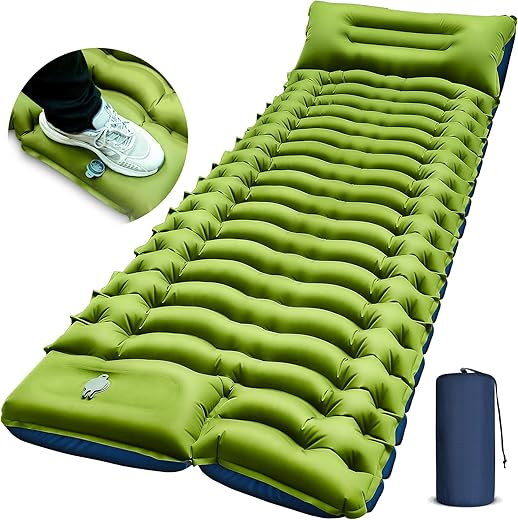
When it comes to backpacking, the thrill of exploring the great outdoors often intersects with the challenge of getting a good night’s sleep in the wild. After a long day of hiking, the last thing you want is to toss and turn on a thin mattress that does little to shield you from the chill of the ground. This is where the importance of a quality lightweight sleeping pad comes into play. In this post, we’ll explore the best options available, examining how a high-quality sleeping pad can transform your camping experience by offering both comfort and essential insulation. Join us as we delve into the features that can help ensure you wake up refreshed and ready to tackle the adventures that lie ahead!



Factors to Consider When Choosing a Lightweight Sleeping Pad
Selecting the right lightweight sleeping pad is crucial for backpackers looking to maximize their comfort while minimizing weight. The following are key factors that outdoor enthusiasts should carefully consider when making their choice.
Weight
The weight of a sleeping pad can significantly impact your overall pack weight. Lighter pads often make it easier to stick to a weight limit, especially on long treks where every ounce counts. Look for pads that are under 2 pounds, particularly if you plan to hike for weeks at a time.
- Example Products:
- Therm-a-Rest NeoAir Ultra Lite: Weighs around 12 ounces.
- Sea to Summit Ultra Light: Weighs approximately 1 pound and is known for its lightweight design.
R-Value (Insulation)
The R-value measures a sleeping pad’s thermal resistance, indicating how warm it will keep you during the night. A higher R-value means better insulation, which is crucial for colder weather camping.
- R-value Guidelines:
- R-value < 2: Best for summer and warm conditions.
- R-value 2-4: Suitable for three-season use (spring, summer, fall).
- R-value > 4: Designed for winter and extreme conditions.
- Example Products:
- R-value 2: Big Agnes Q-Core SL – Ideal for summer.
- R-value 4.2: Therm-a-Rest NeoAir XTherm – Considered one of the warmest pads available.
Packability
How well a sleeping pad compresses for storage can make a difference in your pack’s capacity. Look for pads that can easily fit into a side compartment or stuff sack.
- Convenience Tips:
- Smaller Packed Size: This allows for easier organization in your backpack.
- Compression Systems: Some brands have built-in features that allow for reducing the size.
- Example Products:
- Nemo Tensor: Packs down to the size of a water bottle.
- Sea to Summit Camp & Comfort: Compresses tightly, saving space.
Comfort
Finding a comfortable sleeping pad can make or break your camping experience. Look for features such as thickness, construction, and material.
- Comfort Factors to Consider:
- Thickness: Generally, thicker pads provide more padding but may be heavier.
- Surface Texture: Some pads have a soft top for added comfort.
- Example Products:
- Klymit Static V Lite: Known for its ergonomic design and comfort.
- Therm-a-Rest NeoAir Xlite: Offers a balance between lightweight and comfort.
Durability
A sleeping pad’s durability affects its longevity and performance in the field. Select pads made from high-quality materials that can withstand abrasion, punctures, and tears.
- Durability Checkpoints:
- Material Type: Look for pads made from nylon or ripstop fabric as they offer better durability.
- Warranty: A longer warranty often indicates higher quality.
- Example Products:
- Exped SynMat HL: Built with a high-quality construction method, making it robust.
- Big Agnes Air Core Ultra: They promote high durability for backpacking enthusiasts.
Price
Budget plays a significant role in selecting a sleeping pad. While higher-end models offer advanced features and performance, there is also a value range that can be quite effective for beginner and intermediate campers.
- Price Points:
- Under $100: Suitable for those who are starting out or hike less frequently.
- $100-$200: Represents a mix between advanced features and reliable performance.
- $200+: For those looking for ultralight features, high R-values, and premium materials.
- Example Products:
- REI Co-op Flash: Affordable and lightweight, under $100 makes it a great entry-level option.
- Therm-a-Rest NeoAir Elite: Within the $200+ range for ultralight efficiency.
By considering these factors, backpackers can make informed decisions when choosing a lightweight sleeping pad, ultimately enhancing their outdoor experience by ensuring restful nights in various conditions.
Top Lightweight Sleeping Pads on the Market
Choosing the right sleeping pad is crucial when it comes to enjoying the great outdoors, whether for hiking, camping, or backpacking. A lightweight sleeping pad can make a significant difference in how well you rest and recover at night. In this section, we’ve curated a list of some of the best lightweight sleeping pads currently available, complete with their key features, pros and cons, and ideal use cases.
Best Lightweight Air Pads
Sea to Summit Ether Light XT Insulated Air Sleeping Mat
- Weight: 15 ounces (regular variant)
- R-Value: 3.2
- Dimensions: 72 x 21 x 4 inches
Pros:
- Excellent warmth-to-weight ratio
- High durability with nylon fabric
- Air valves provide easy inflation/deflation
Cons:
- Relatively expensive
- Requires careful packing to avoid punctures
Ideal Use Case:
Perfect for 3-season backpacking trips where both weight and insulation are priorities.
Therm-a-Rest NeoAir Xlite
- Weight: 12 ounces (regular size)
- R-Value: 4.2
- Dimensions: 72 x 20 x 2.5 inches
Pros:
- Highly compressible and lightweight
- Good thermal efficiency for colder conditions
- Quiet material that doesn’t crinkle
Cons:
- Pricey compared to other pads
- Slightly less thickness may be uncomfortable for side sleepers
Ideal Use Case:
Suitable for backpackers seeking a lightweight pad that performs well in cooler temperatures.
Best Lightweight Foam Pads
Therm-a-Rest Z Lite Sol
- Weight: 14 ounces
- R-Value: 2.0
- Dimensions: 72 x 20 x 0.75 inches
Pros:
- Extremely durable and puncture-resistant
- Lightweight and convenient to carry
- Great for emergency sleeping situations
Cons:
- Less cushioning compared to air pads
- Less comfortable for extended use
Ideal Use Case:
Ideal for ultralight backpackers or minimalist campers who prioritize durability and packability.
NEMO Switchback
- Weight: 14 ounces
- R-Value: 2.3
- Dimensions: 72 x 20 x 1.5 inches
Pros:
- Both sides can be used—the reflective side enhances heat retention
- Great for added insulation and cushioning
- Compact folding design
Cons:
- Bulkier than air pads when packed
- Less adjustable in terms of thickness
Ideal Use Case:
Excellent for car camping or short hikes where weight is not the primary concern.
Best Self-Inflating Pads
REI Co-op Camp Dreamer Self-Inflating Sleeping Pad
- Weight: 3 pounds (very comfortable but heavier)
- R-Value: 6.0
- Dimensions: 72 x 20 x 3 inches
Pros:
- High level of comfort and insulation
- Self-inflating feature reduces setup time
- Multi-layer construction adds support
Cons:
- Heavier if strictly looking for lightweight options
- More cumbersome to pack than air pads
Ideal Use Case:
Perfect for family camping where comfort takes precedence over weight.
Exped SynMat Basic 7.5
- Weight: 2 pounds
- R-Value: 3.1
- Dimensions: 72 x 20 x 3 inches
Pros:
- Comfortable and self-supporting
- Compact size when packed
- Good insulation for colder nights
Cons:
- Firm feel may not suit all users
- Pricier compared to basic foam options
Ideal Use Case:
Best for those seeking comfort in a self-inflating design without going ultra-light.
Comparison Table
| Sleeping Pad | Weight | R-Value | Type | Comfort Level | Price Range |
|---|---|---|---|---|---|
| Sea to Summit Ether Light XT | 15 oz | 3.2 | Air | High | $$$ |
| Therm-a-Rest NeoAir Xlite | 12 oz | 4.2 | Air | Moderate | $$$$ |
| Therm-a-Rest Z Lite Sol | 14 oz | 2.0 | Foam | Low | $$ |
| NEMO Switchback | 14 oz | 2.3 | Foam | Moderate | $$ |
| REI Co-op Camp Dreamer | 3 lbs | 6.0 | Self-inflating | High | $$ |
| Exped SynMat Basic 7.5 | 2 lbs | 3.1 | Self-inflating | High | $$$ |
This curated list of lightweight sleeping pads is aimed at helping you find the right match based on your unique needs, whether you prioritize weight, comfort, insulation, or budget constraints. Each option comes with its distinct advantages, making it essential to evaluate what’s most important for your specific camping or backpacking experience.
Comparison of Features
When choosing a sleeping pad for your outdoor adventures, it’s essential to understand the available options based on specific features. A well-made sleeping pad can significantly enhance your camping experience, offering better comfort and insulation for a good night’s sleep under the stars. Below is a comparison table that outlines key specifications for some of the top sleeping pads on the market. This format allows for easy evaluation of each product based on relevant criteria.
Specifications Comparison Table
| Feature | Therm-a-Rest NeoAir XTherm | Sea to Summit Ultralight Insulated | NEMO Disco Insulated Sleeping Pad | REI Co-op Helio Insulated Pillow |
|---|---|---|---|---|
| Weight | 1 lb 15 oz (0.89 kg) | 1 lb 5 oz (0.57 kg) | 2 lbs 5 oz (1.05 kg) | 9 oz (0.25 kg) |
| R-value | 6.9 | 3.3 | 4.0 | N/A |
| Dimensions | 72 x 20 in (183 x 51 cm) | 72 x 21 in (183 x 53 cm) | 72 x 20 in (183 x 51 cm) | 16 x 12 in (41 x 31 cm) |
| Thickness | 2.5 in (6.4 cm) | 2.5 in (6.4 cm) | 3 in (7.6 cm) | N/A |
| Material | 30D ripstop nylon | 20D nylon ripstop | 30D polyester | 100% polyester |
| Price | $249.95 | $139.00 | $179.95 | $39.95 |
Key Features Explained
- Weight: If you plan on backpacking, weight is a critical factor. The Sea to Summit Ultralight Insulated Sleeping Pad wins in this category, weighing only 1 lb 5 oz, making it an ideal choice for ultralight backpackers.
- R-value: The R-value measures a pad’s insulation capability. The higher the R-value, the better the thermal insulation. The Therm-a-Rest NeoAir XTherm stands out with an impressive R-value of 6.9, perfect for cold-weather camping.
- Dimensions: It’s essential to consider how much space you’ll need for a comfortable sleep. All listed sleeping pads provide enough width for average-body sized individuals; however, the Sea to Summit has a slight advantage with its wider design, which could accommodate broader shoulders.
- Thickness: Thickness affects the comfort level and insulation. The NEMO Disco Insulated Sleeping Pad offers more thickness, making it suitable for those who prefer extra cushioning, especially on uneven terrain.
- Material: Durability is key for outdoor gear. The majority of these sleeping pads use ripstop nylon or polyester—both are resilient materials—but the Therm-a-Rest and NEMO models utilize a slightly thicker fabric for added durability.
- Price: Budgeting is an important aspect of purchasing gear. The REI Co-op Helio Insulated Pillow stands out with its affordable price of $39.95, focused more on providing comfort as a supplemental item rather than a standalone sleeping pad.
Practical Examples
- Therm-a-Rest NeoAir XTherm: Ideal for winter backpacking or colder temperatures thanks to its high R-value. Users looking for warmth without the bulk will appreciate its compact design.
- Sea to Summit Ultralight Insulated Pad: Great for backpackers focused on weight savings. Its lightweight structure does not compromise on comfort, providing sufficient insulation for moderate temperatures.
- NEMO Disco Insulated Sleeping Pad: Designed for car camping or trips where weight isn’t a primary concern. The additional cushioning supports various sleeping positions, revolutionizing the camping experience.
- REI Co-op Helio Insulated Pillow: An excellent adjunct for those using a sleeping pad, especially for back sleepers who need extra neck support without adding much weight.
By comparing these specifications and features, you’ll be better equipped to select the best sleeping pad that fits your specific needs, whether you’re a casual camper or a dedicated backpacker. Understanding the distinctions helps ensure that your choice enhances your outdoor adventures, leading to more enjoyable nights under the stars.
Tips for Using and Maintaining Your Sleeping Pad
Proper Inflation Techniques
Inflating your sleeping pad correctly is crucial for achieving the best comfort and insulation. Here are some tips:
- Use a Pump: If your sleeping pad includes a built-in pump like the Sea to Summit Ether Light XT Extreme, take advantage of it. This helps prevent moisture from your breath from entering the pad, which can lead to mold.
- Don’t Overinflate: Ensure that you inflate your pad just enough for comfort. Overinflation can stress the seams and material. Pads like the Therm-a-Rest NeoAir XTherm give you feedback during inflation—stop inflating once you achieve the desired firmness.
- Temperature Awareness: Remember that the temperature can affect inflation. In cold conditions, air inside the pad can contract, making your sleeping pad feel less firm. Adjust accordingly by releasing a bit of air.
Deflation Made Easy
Deflating your sleeping pad can be just as crucial to its longevity. Consider these techniques:
- Open Valve Fully: Pads like the REI Co-op Flash feature a one-way valve. Opening it fully allows for rapid deflation. You can also roll the pad from the end opposite the valve to expedite the process.
- Use the Compression Sack: If your sleeping pad comes with a compression sack, use it! This prevents the pad from expanding back to full size and facilitates easier packing.
Storage Recommendations
Proper storage can significantly extend the lifespan of your sleeping pad. Here are some practical storage tips:
- Avoid Long-Term Compression: While it might be tempting to keep your pad in its stuff sack, storing it loose, like in a Sea to Summit Ultra-Sil Compression Sack, is better for the material.
- Temperature and Humidity: Store your sleeping pad in a cool and dry place. Excess humidity can lead to mold while high heat can degrade the material over time.
- Valves Closed: Always store your sleeping pad with the valves closed to prevent any critters from entering and causing internal damage.
Cleaning Your Sleeping Pad
Maintaining a clean sleeping pad is essential not just for hygiene but also for material longevity. Here’s how to properly clean your pad:
- Use Mild Soaps: For light cleaning, use a mild soap like Dr. Bronner’s Magic Soap and warm water. A soft cloth or sponge works best. Avoid abrasive cleaners that can compromise the material.
- Spot Clean Stains: For small stains, a damp cloth with mild soap is usually sufficient. Examining and addressing stains immediately can prevent them from setting.
- Drying: Always air-dry your sleeping pad thoroughly before storing it. Lay it flat, away from direct sunlight to prevent UV damage, which can degrade synthetic fabrics.
Repairing Leaks or Damage
Despite careful use and maintenance, accidents happen, and your sleeping pad may develop leaks. Here’s how to handle repairs:
- Repair Kits: Brands like Therm-a-Rest offer repair kits that include patches specifically designed for their materials. Always keep a patch kit handy, especially for long trips.
- Identify the Leak: Inflate your pad and submerge it in water, watching for bubbles to identify the source of the leak. Mark any leaks with a waterproof marker.
- Applying the Patch: Clean the patch area with alcohol to remove oils, apply the adhesive (if required), and place the patch over the leak. Allow time per manufacturer instructions for the adhesive to set.
Caring for Your Pad
Caring for your sleeping pad doesn’t just extend its lifespan; it ensures your comfort during camping adventures. Here are key points to keep in mind:
| Care Tip | Details |
|---|---|
| Inflate Properly | Use a pump or the right method to prevent moisture and damage. |
| Roll and Store | Use a compression sack for travel, but remove from it when storing long-term. |
| Regular Cleaning | Clean after each use and allow to air dry completely. |
| Immediate Repairs | Patch leaks quickly to prevent further damage. |
By following these practical tips and caring for your sleeping pad as recommended, you’ll ensure it serves you well for many adventures to come. Whether you’re using a lightweight model like the Big Agnes Q-Core SLX or the ultra-comfortable Nemo Disco Insulated, proper use and maintenance are key to enhancing their performance and lifespan.
Final Thoughts and Recommendations
In conclusion, selecting the best lightweight sleeping pad for backpacking is crucial for ensuring a comfortable and restful night’s sleep in the outdoors. Throughout this post, we explored key factors to consider, such as weight, insulation, durability, and ease of setup. Each backpacker’s needs may vary based on personal preferences and the types of trips they undertake. Therefore, it’s essential to weigh these factors carefully against the options discussed. For those seeking a balance of comfort and weight, we recommend considering top models like the Therm-a-Rest NeoAir Xlite or the Sea to Summit UltraLight as potential solutions. Ultimately, choosing the right sleeping pad will enhance your overall backpacking experience, allowing you to wake up refreshed and ready to explore nature.



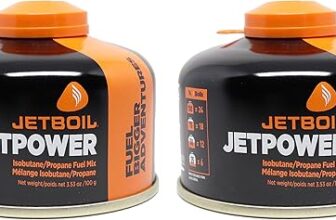
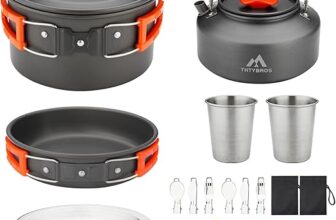
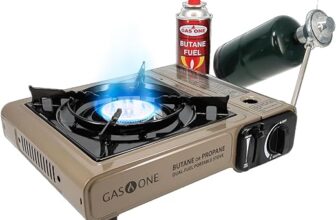
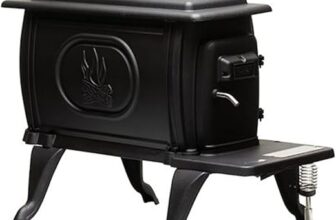


What about specific recommendations for ultra-light pads? I’m looking to shave off weight for my next trip!
Great question! Some solid options for ultra-light pads include the Therm-a-Rest NeoAir XLite and the Sea to Summit Ultralight. They balance weight and comfort really well!
What’s the deal with self-inflating pads? Are they worth the extra weight?
Self-inflating pads can offer extra comfort and insulation, but they do weigh more. It’s a trade-off between comfort and pack weight!
I’ve been using the Big Agnes Q-Core SLX and it’s super comfy! Definitely recommend it for anyone who values a good night’s sleep.
Thanks for sharing! The Q-Core SLX is a fantastic choice for comfort and weight. Glad to hear you’re enjoying it!
Can you guys share any tips on packing these pads for hiking? I always end up with a bulky mess!
Sure! Rolling them tightly and using a stuff sack can save space. Some folks also use compression sacks for even more compact packing.
Any recommendations for further reading on lightweight backpacking gear? I’m looking to upgrade more than just my sleeping pad.
Definitely check out ‘The Ultimate Hiker’s Gear Guide’ by Andrew Skurka. It’s packed with info on lightweight gear and tips for backpacking!
The information about using and maintaining pads was super helpful! I had no idea about the importance of keeping them clean.
Glad you found it helpful! Keeping your pad clean can really extend its lifespan. Regular maintenance is key!
Absolutely! The R-value is crucial for insulation, and it varies by season. For warmer conditions, a 1-2 R-value is fine, while colder weather might require 3-5 or even higher. I’ll expand on this in an update!
I’d love to see a comparison chart for the top pads mentioned! It’d make it easier to visualize differences.
Does anyone else have issues with sleeping pads losing air overnight? I’ve had a few that just didn’t hold up.
That’s a common pain point! Some pads are more prone to leaks due to their materials. It helps to check for durability and read user reviews before purchasing.
Hey, can you give more details on how to choose the right R-value for different climates? That part was a bit vague!